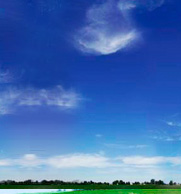 |
|
 |
 |
|
Global warming: Impact of receding snow and ice surprises scientists 18.01.2011
|
 |
print
 |
|
http://www.csmonitor.com/Environment/2011/0118/Global-warming-Impact-of-receding-snow-and-ice-surprises-scientists
The seasonal cooling effect of light-reflecting snow and ice in the Northern Hemisphere may be weakening at twice the rate predicted by climate models, a new study shows, accelerating the impact of global warming.
A long-term retreat in snow and ice cover in the Northern Hemisphere is weakening the ability of these seasonal cloaks of white to reflect sunlight back into space and cool global climate, according to a study published this week.
Indeed, over the past 30 years, the cooling effect from this so-called cryosphere – essentially areas covered by snow and ice at least part of the year – appears to have weakened at more than twice the pace projected by global climate models, the research team conducting the work estimates.
The study, which appeared online Sunday in the journal Nature Geoscience, represents a first cut at trying to calculate from direct measurements the impact of climate change on the Northern Hemisphere's cryosphere. The study was conducted by a team of federal and university scientists who examined data gathered between 1979 and 2008.
Of particular interest is a self-reinforcing process, or feedback, though which warming reduces snow and ice cover. Those reductions expose more ocean and landscape to sunlight during spring, summer and fall. After absorbing the sunlight, these exposed features radiate the heat back into the atmosphere. This accelerates the loss of snow and ice already triggered by global warming.
Pinning down the size of this effect – one of three major feedbacks in the global climate process – is important in understanding how much the global climate could warm in response to rising concentrations of greenhouse gases that human activities have pumped into the atmosphere, explains Mark Serreze, director of the National Snow and Ice Data Center in Boulder, Colo.
Over the past decade or more, other teams have tracked the decline of snow and ice cover in the Northern Hemisphere, the northward march at high latitudes of vegetation typically found farther south, and other changes that suggest the feedback has kicked in.
This latest study says "yes, the feedback is working as we suspected it would be," says Dr. Serreze, who was not part of the team conducting the research. "But it also argues that maybe the feedback is stronger than we thought it would be."
That last point will likely be challenged, he adds, as part of the scientific process.
"Putting numbersto these feedbacks is a tough thing to do," he says. Still, "this is an important paper. I see this as a significant advance in climate science."
As one of the world's two deep-freeze thermostats, Antarctica is still chiller-in-chief. But because the Arctic is warmer than its southern counterpart, small changes in temperatures at the top of the world have a relatively larger effect on ice and snow cover, researchers say.
|
|
|
|




 Română
Română English
English


